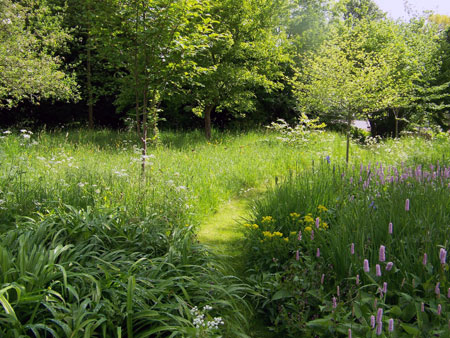How To Encourage Wildlife into Your Garden
Some Tips for Encouraging wildlife into your garden:
Stack of Logs.
If you make a small stack of logs and cones, you will provide shelter for a variety of small creatures such as frogs, insects and small mammals. The stack of logs can be attractive in its own right and helps to build up an eco system in the garden.
Nesting boxes.
Choose a variety of nesting boxes for birds and also insects. One of the most useful creatures in the garden is the hoverfly. Former BBC gardeners world presenter, Geoff Hamilton, used to provide nesting boxes especially for hoverflies and ladybird, he even used to harden off the nesting spaces.
Water.
A pond with easy access from the side will be much appreciated by birds, hedgehogs and frogs. Make sure it is easy to access from the sides. In summer keep the pond topped up; this can be very important during very dry periods, when many water sources may dry up.
Have a Wild Area.
A wild area need not be unattractive. The problem is that we often associate gardens with perfectly manicured lawns and bedding plants; but, actually there is great beauty in allowing grass to grow long and allowing a profusion of wild plants to grow. Choose an area of the garden to have a natural look. This will be much appreciated by a variety of animals
Don’t Poison potential visitors.
To deal with slugs try using beer traps and protect vulnerable plants. If you use slug pellets you risk poisoning birds and frogs. If you have to use slug pellets dig them under the surface of the soil so they are less visible to animals; 80% of the time slugs are underground so they will get the slugs with less damage to other animals.
Don’t be Too Tidy.
Animals like the protection of leaf cover. So don’t feel obliged to tidy up everything. Allow some parts of the garden to have a natural look and feel.
Trees and Hedges
Wildlife, especially birds look for shelter. If you wish to encourage wildlife and birds make sure they feel safe. The best way to to do this is grow suitable trees and hedges. Choose traditional hedges and tress; conifers generally support much less wildlife.

3 thoughts on “How To Encourage Wildlife into Your Garden”
Hello, I found you on Blotanical and came over to read awhile. I started at the top with the newest, and now I find myself way down here. Needless to say, I have enjoyed my visit and my read! Will be back to read more another time.
Comments are closed.